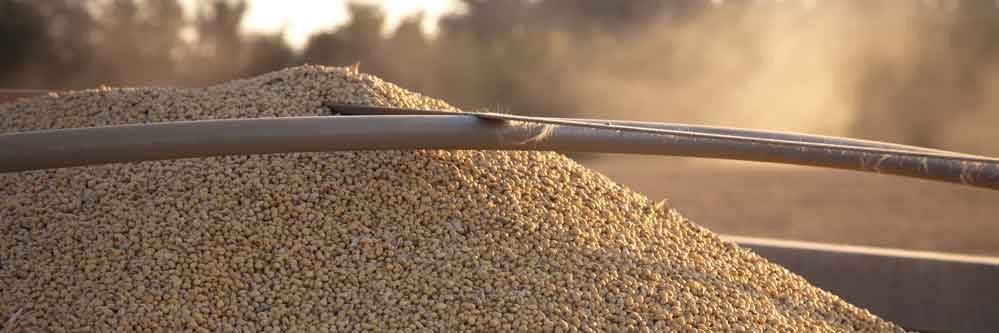
Q: What is the commodity price outlook for corn, soybeans, wheat in 2014?
A: Commodity prices are under pressure following the generally good crops in 2013.
Corn: Even after a yield of about 4 bushels/acre less than the long term trend, there was nearly 1 billion bushels more production than expected. Ending stocks (or reserves) will about double during the crop year. Assuming yields will rebound back to trend level, this excess supply will only get worse – and could reach 3 billion bushels! Prices will continue to drop until the market convinces farmers to plant less corn.
Soybeans: Unlike corn, all of the 2013 soybean crop will be either exported or crushed. The stocks to use ratio will stay very low in 2014 and may even be lower than 2013. But, Brazil’s crop will be a record high, thus easing the demand for US soybeans. As corn prices decrease, soybean acreage should increase, perhaps, to a record high. Prices may not be as high as 2012/13, but should remain fairly high.
Wheat: Stocks are declining, but so are prices. Foreign production increased significantly last year. The former Soviet Union, especially Russia, Ukraine and Kazakhstan, had the most growth. Although prices were supported early in the crop year from strong sales to China, it is uncertain if sales will last all season. Assuming a normal growing season, US and foreign production should increase. This will cause world stocks to rise and prices to fall. Worldwide wheat consumption will continue to rise at about 1.5% per year.
Q: What US planted acreage predictions do you have for the upcoming corn and soybean crop?
A: Crop budgets show net returns over operating costs about equal for corn and soybeans this 2014 planting season. Despite the large amount of ending stocks, the market is not sending producers a clear message to reduce acreage. One key reason is a big drop in fertilizer prices. Prices for all three main fertilizer nutrients are down more than 20% from a year ago. Budgets for USDA’s Prairie Gateway region (Central Plains) still show net returns for corn higher than for soybeans. Big picture, there should be a modest decline in corn acreage with a modest increase in soybean acres nationwide. The math says, in order to match up with demand, corn acres need to go down to around 90 million acres. USDA data indicates that producers wanted to plant 98 million acres in 2013. Such a large decline in acres from 2013 to 2014 is not likely to happen.
Q: What are the major factors contributing to market direction this year?
A: The ethanol industry has been the major driver for the corn sector the past several years. But the growth of this industry is most likely over. EPA has proposed reducing the amount of biofuels used in 2014. This would put corn demand for domestic ethanol around 4.7 billion bushels. Including exports, total demand might stay around 5 billion bushels. Although important, ethanol will no longer be a source of demand growth.
Q: What foreign production is affecting US prices, where is our competition coming from?
A: The recent high corn prices have boosted production around the
world, as well as US corn production. World corn acres have increased by 98 million acres since 2000. China accounts for more than 25 million of those acres, the US an additional 16 million, Ukraine 7 million, Brazil 6 million, and Argentina 3 million acres. As corn prices fall and the surplus rises, worldwide production growth will be something to watch.
In short, there will continue to be a surplus of corn, causing prices to drop. Despite lower prices, corn acreage won’t drop to the level needed to match up with demand. In time, the market may drop enough to convince farmers to invest their time and resources into soybeans or a different crop. Soybean prices will stay high this year. Even with Brazil’s large soybean crop, demand for US soybeans will also stay high. Worldwide, wheat demand will continue to rise steadily. The US, as well as foreign growers, should plan for increasing production and the lower prices.
If you would like to learn more about Rich Pottorff and Doane Advisory Services, visit the website http://www.doane.com/agribusiness-info/.
Featured Image: Soybeans Loaded for Transport, United Soybean Board, flickr.com





